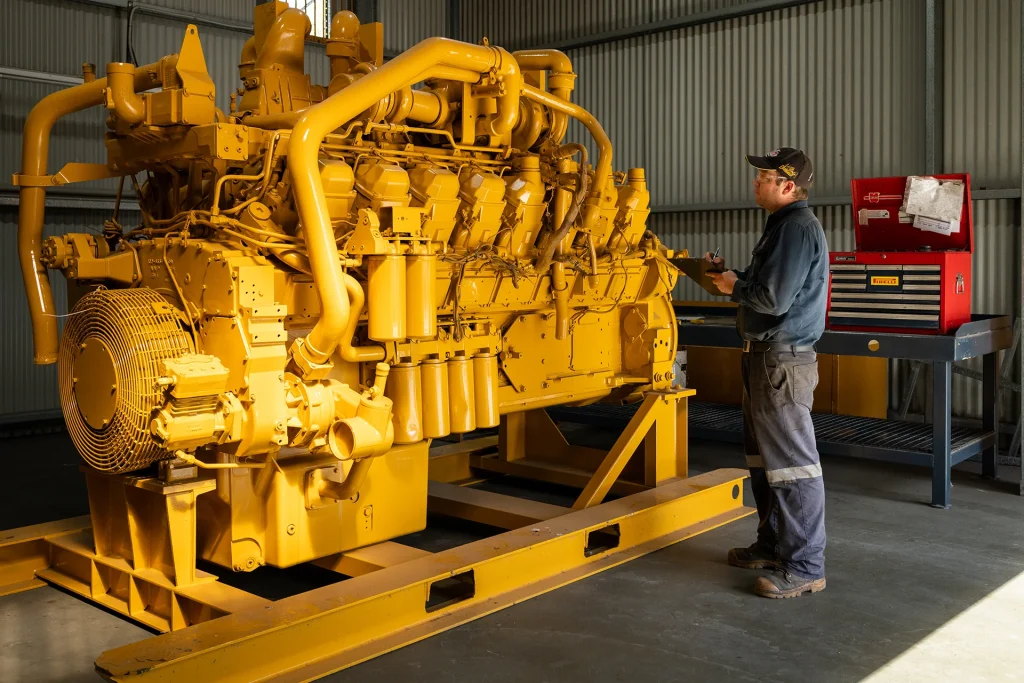Mining equipment engines play a critical role in the productivity, reliability, and safety of large-scale mining operations. These engines are responsible for powering excavators, haul trucks, dozers, and support vehicles across a wide range of surface and underground applications.
Choosing the right engine and ensuring timely replacement or servicing is essential to maintaining operational efficiency on site. This article provides an overview of common engine types used in mining, typical applications, and the factors that influence engine selection, sourcing, and maintenance.
Common Engine Types in Mining Equipment
Mining machinery relies on high horsepower diesel engines designed to perform under extreme load, heat, and dust exposure. These engines are typically classified by manufacturer and series, each tailored to suit specific equipment functions.
Caterpillar Engines
Caterpillar engines are widely used across haul trucks, dozers, graders, and loaders in mining fleets. Their engines are known for torque, fuel efficiency, and long service life.
Typical Caterpillar engine models found in mining applications include:
- C175 series – used in large haul trucks such as the 793F
- C32 and C27 – common in dozers, wheel loaders, and support machines
- C18 – found in graders and auxiliary fleet equipment
- 3516 and 3412 – long-standing options for older generation trucks and scrapers
Cummins Engines
Cummins supplies high horsepower engines commonly used in excavators, trucks, and large auxiliary equipment. Known for modular design and ease of servicing, Cummins engines are frequently selected for large equipment assets.
Examples include:
- QSK60 – fitted in ultra-class excavators and haul trucks
- QSK45 – often matched to machines such as the Hitachi EX5500
- QSK23 and QSK19 – used in medium to large equipment with high duty cycles
Hitachi Engines
Hitachi’s large hydraulic mining excavators often utilise Cummins engines integrated into the Hitachi system design. These machines rely on engine modules that are calibrated for smooth integration with hydraulic and electronic systems.
Common machines include:
- Hitachi EX5500 and EX5600
- Hitachi EX8000
- Hitachi EX3600 and EX2500
Each model has unique engine configurations based on load profile, cooling system, and control architecture.
Matching Engines to Applications
Mining engines are not interchangeable across equipment types. Each engine must match the load profile, cooling system, electronic control system, and mounting configuration of the machine it is being fitted to.
Considerations when matching an engine to its application include:
- Equipment model and series
- Operating environment and duty cycle
- Horsepower and torque requirements
- Compatibility with existing hydraulics and electrical systems
- Emission compliance and site requirements
Incorrect pairing can lead to accelerated wear, poor fuel efficiency, or control system faults. This is why sourcing engines for mining applications requires both technical understanding and practical experience.
Servicing and Replacement Intervals
Engines in mining environments are typically serviced on a strict interval schedule based on hours worked. Most mining engines require:
- Regular fluid and filter changes every 250 to 500 hours
- In-depth inspections and diagnostics every 1,000 to 2,000 hours
- Rebuild or replacement after reaching end-of-life, typically between 15,000 and 25,000 hours depending on load and maintenance history
Engines that are nearing end-of-life or have experienced failure are often replaced entirely rather than rebuilt, particularly in high production environments where downtime must be minimised.
Factors That Influence Mining Engine Sourcing
When a mining engine reaches the end of its operational life, operators have several options:
- New OEM replacement
- Factory remanufactured engine
- Good used engine with low hours
- Component-level rebuild or part recovery
The right option depends on budget, time constraints, equipment age, and availability.
Used and low-hour engines are often selected for machines with limited remaining lifespan or for cost-sensitive projects. These engines must still meet strict standards to ensure safe operation in high-load environments.
Key sourcing factors include:
- Verified service history and hours
- Physical condition and inspection outcomes
- Matching engine configuration and part number
- Transport readiness and lead time to site
Logistics and Supply Chain Considerations
Mining operations are often located in remote regions with limited access to freight services. Engine sourcing and delivery must account for:
- Transport weight and dimensions
- Crating and export compliance
- Customs and import clearance for international supply
- Availability of lifting equipment for site delivery
- Engine commissioning support if required
Global supply chains can be affected by lead time variability, so many operations choose to keep one or more spare engines on hand for critical fleet assets.
Buy Caterpillar and Cummins Engines
Understanding how mining equipment engines are specified, sourced, and maintained is essential to running a productive and reliable fleet. Each engine must meet the performance demands of the machine and the operational expectations of the site.
Whether managing a fleet of Caterpillar dozers, Cummins-powered excavators, or Hitachi mining shovels, effective engine lifecycle planning supports production, safety, and cost control.
DGI Trading is a trusted global supplier of late model, low hour engines for mining equipment. If you are planning a replacement, building a critical spare inventory, or urgently need a ready-to-go engine, speak with our team today.
Call +61 2 6563 7992 or email salesaustralia@dgitrading.com to confirm availability or request sourcing support. Our technical team can assist with fitment guidance, freight options, and documentation to get your engine on site fast.

